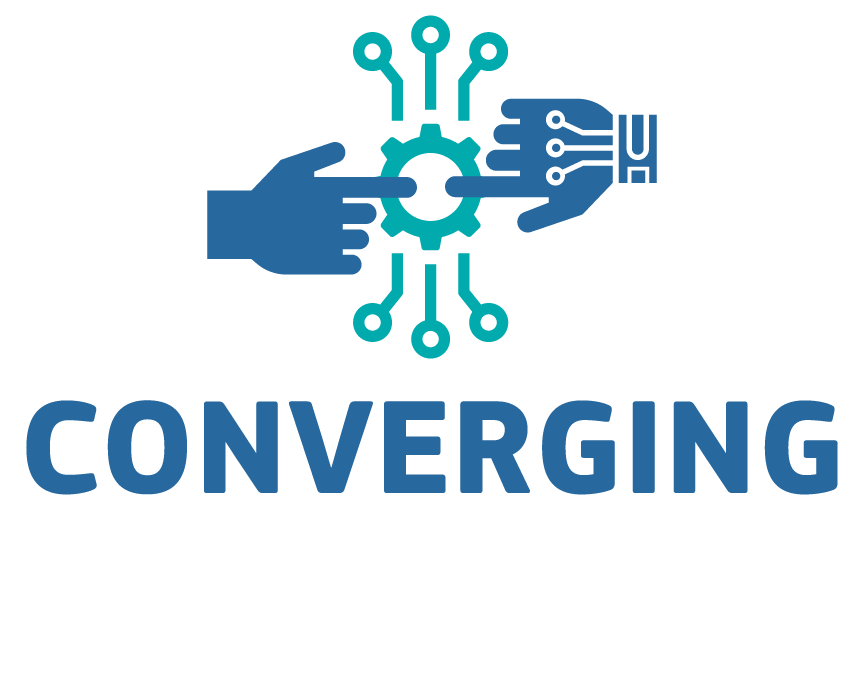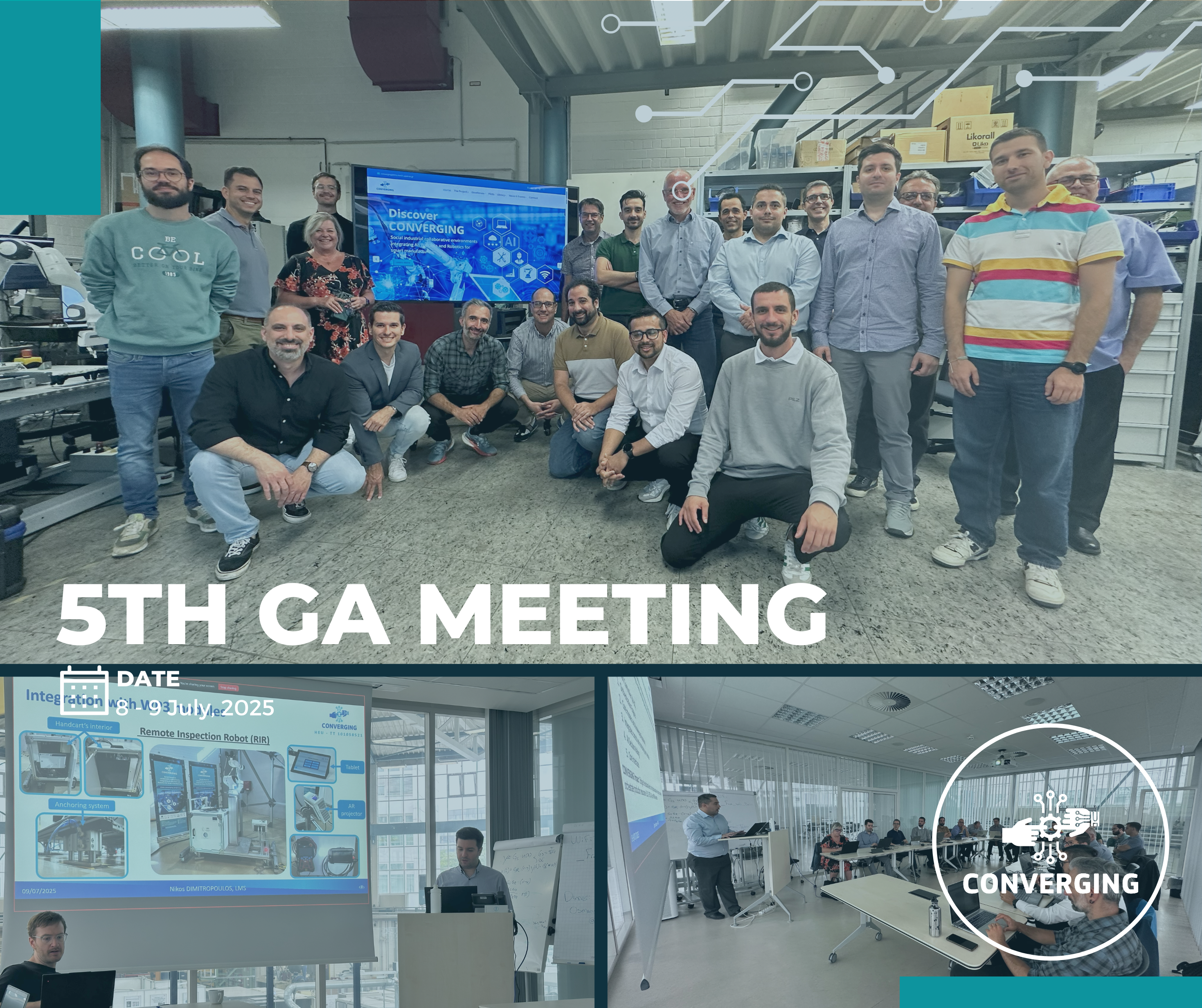CONVERGING’s 5th General Assembly Meeting in Berlin
On June 8–9, 2025, the CONVERGING consortium came together in Berlin for its 5th General Assembly Meeting, hosted at the impressive Fraunhofer premises. Τhe physical meeting offered a great opportunity for connection, reflection, and planning as the project moves into its final phase.
The meeting began with a warm welcome from Project Coordinator Nikos Dimitropoulos (LMS, University of Patras), who introduced the agenda for the two-day event and set a collaborative tone for what would be a milestone moment for the consortium.
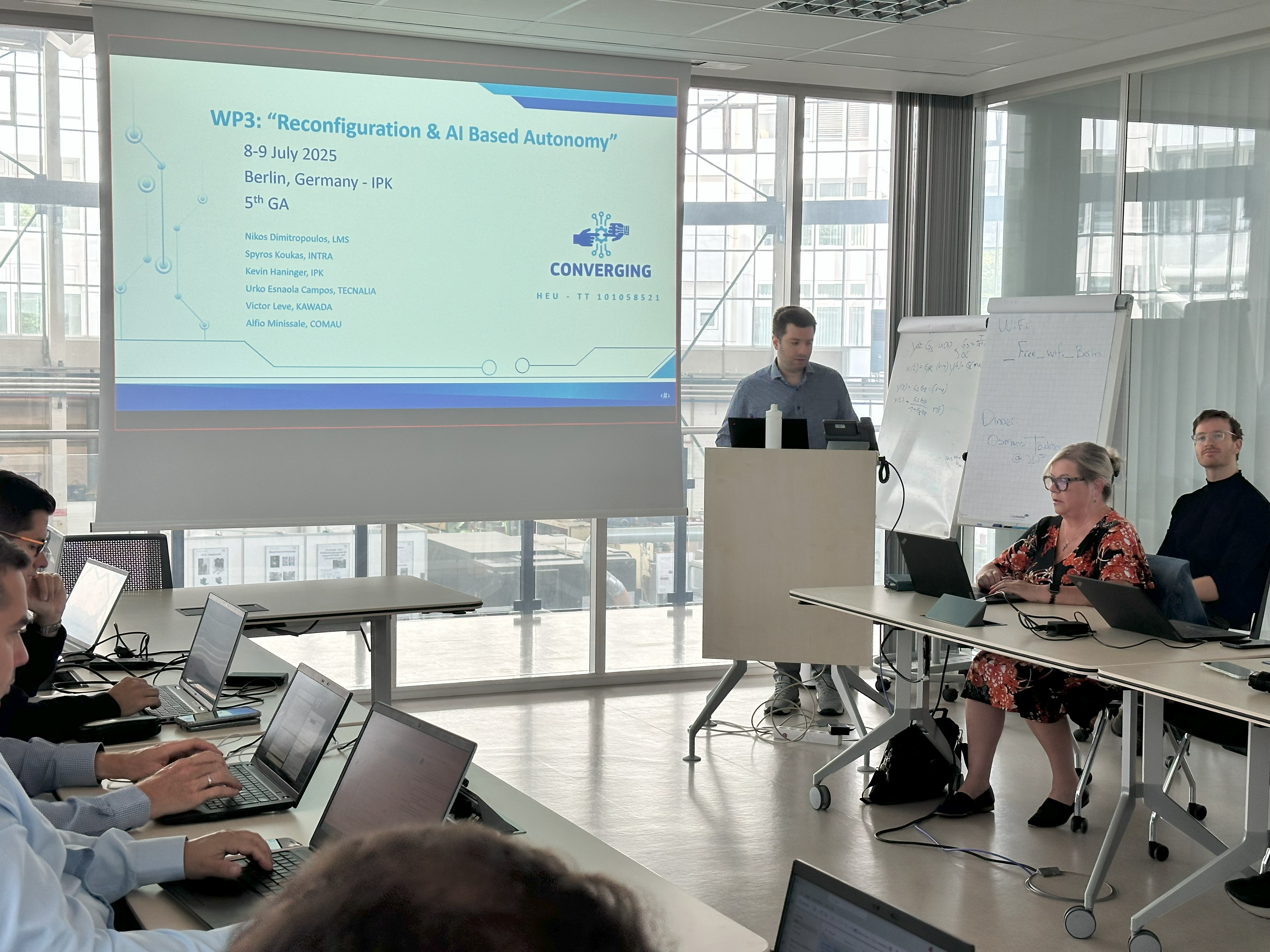
The first day focused on reviewing progress since the last meeting and identifying the next steps for several core areas of the project. The discussions reflected just how far CONVERGING has come and how much closer we are to creating smarter, more adaptive production systems powered by AI, big data, and robotics.
-
Autonomy & Reconfiguration: Partners shared developments around AI-based autonomy, especially how robots can now adapt their actions in real time. This flexibility is crucial in dynamic environments where human presence or unexpected events can impact robotic tasks.
-
Big Data Infrastructure: The team delved into the progress made on real-time data collection and processing systems—foundations that allow machines, humans, and digital twins to communicate seamlessly and respond intelligently.
-
Human-Centered Design: One of CONVERGING’s most distinctive elements—creating inclusive, safe, and ergonomic industrial environments—was at the heart of several presentations. The focus remains on ensuring humans and machines can work together as real teammates, not just tools and operators.
-
Communication & Impact: Updates on dissemination and exploitation highlighted the growing visibility of the project and plans to share results with wider industry, academic, and policy audiences. Contributions to standardization efforts were also discussed, underscoring CONVERGING’s long-term influence.
A Glimpse Into the Future: Demo at Fraunhofer
A major highlight of the day was a live demonstration hosted by Fraunhofer. The team showcased part of the White Goods Pilot Case using the Kawada robot. Two tasks were shown: one involving the placement of induction components and another demonstrating high-precision cable insertion into a control board. The precision, speed, and coordination of the robot underlined the real-world value CONVERGING is bringing to manufacturing.
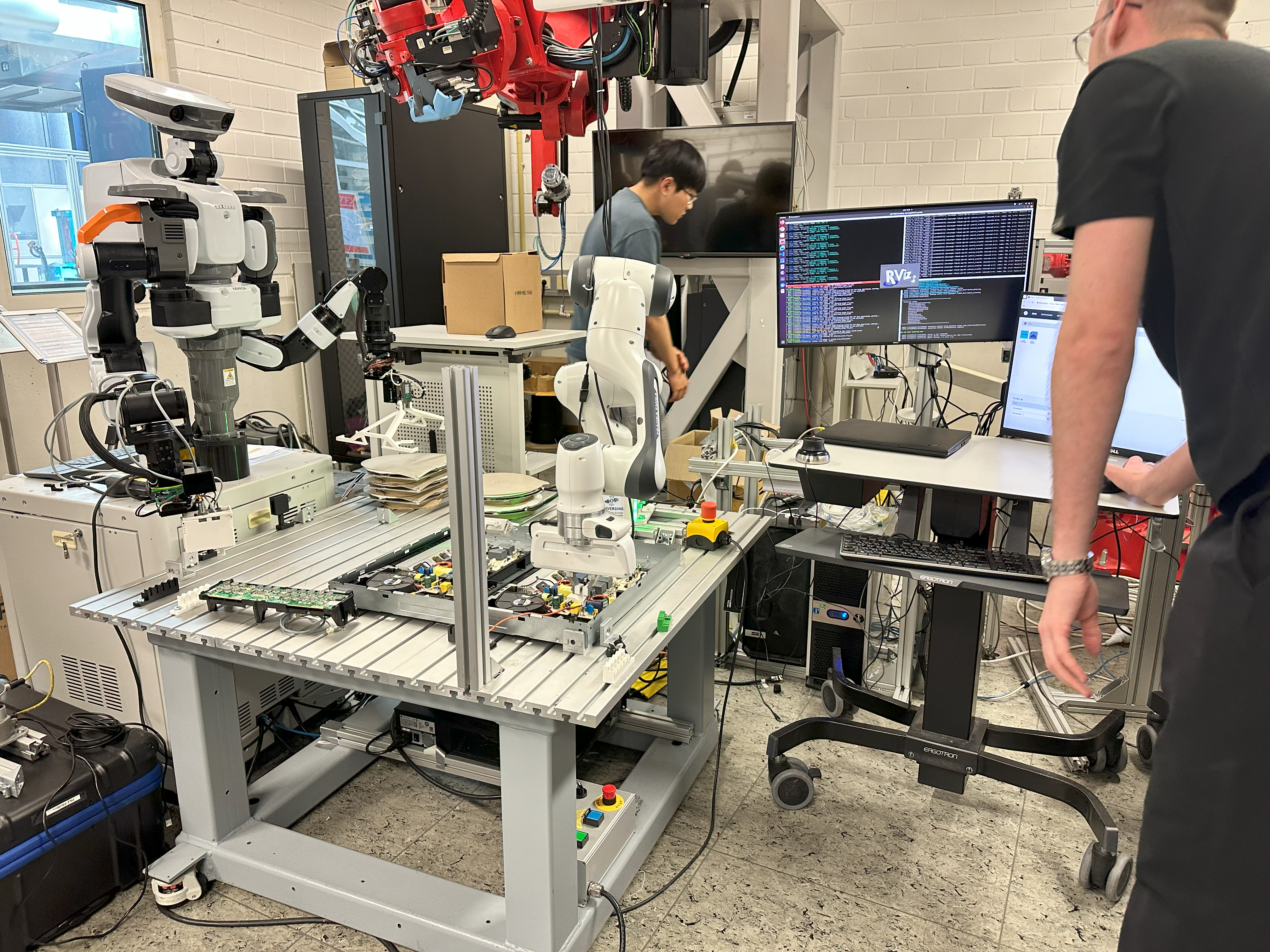
This was followed by a walking tour of the Fraunhofer labs, where partners could see firsthand some of the cutting-edge technologies that are helping shape the project's evolution.
Day two shifted the spotlight to human-machine collaboration and the upcoming pilot implementations.
-
Human-Machine Collaboration (HMC): The discussion emphasized how the project is enhancing intuitive interfaces and AI that can understand—and even anticipate—human actions. From real-time safety to adaptive assistance, the goal is to make machines smarter collaborators, not just smarter machines.
-
Industrial Pilots: The consortium reviewed progress across all four pilot sectors—automotive, aeronautics, additive manufacturing, and white goods. With the Open Pilot phase wrapping up, the focus now turns to final demonstrations. These real-world tests will show the CONVERGING system in action, offering flexible, scalable, and intelligent production solutions.
The meeting closed with planning for the next review and alignment on key deliverables and milestones. There was a shared sense of momentum—and excitement—for what’s coming next.
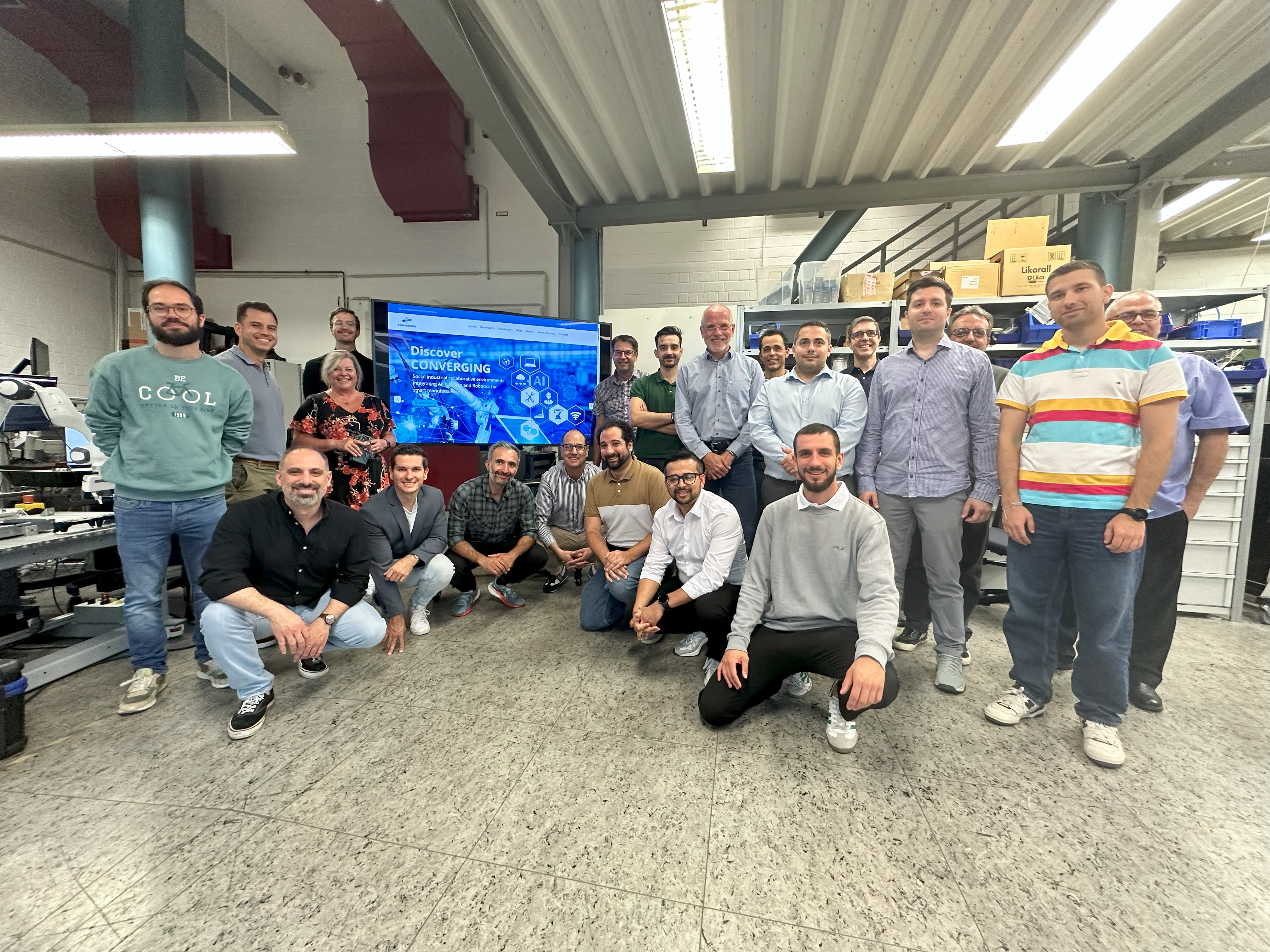
As CONVERGING moves into its final stages, the technologies developed are becoming more tangible, more integrated, and more impactful. What once started as a vision is now unfolding in real labs and factories—proof that AI, robotics, and human insight can come together to build a new era of manufacturing.
